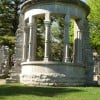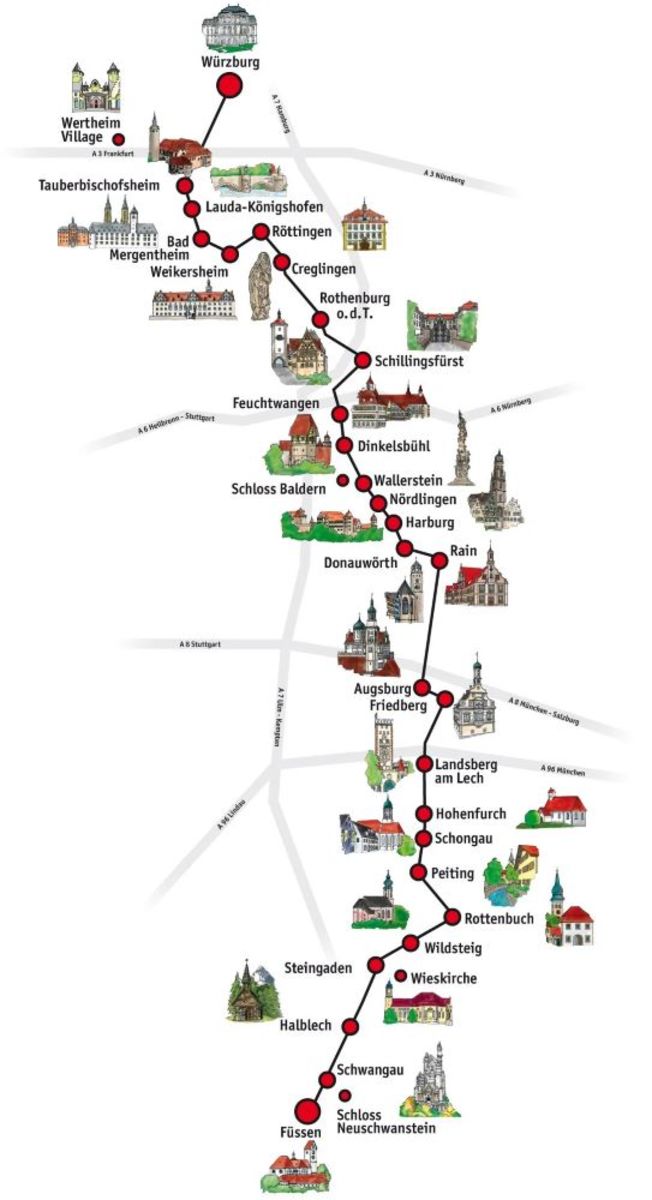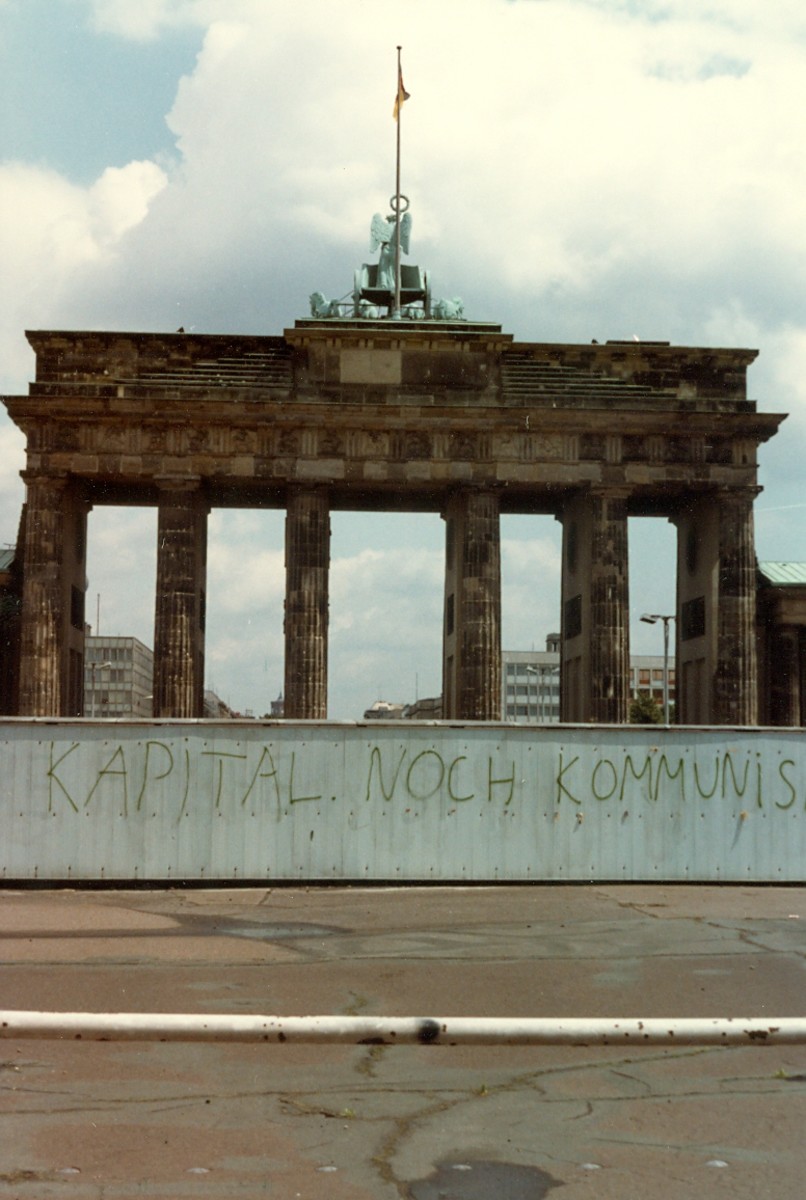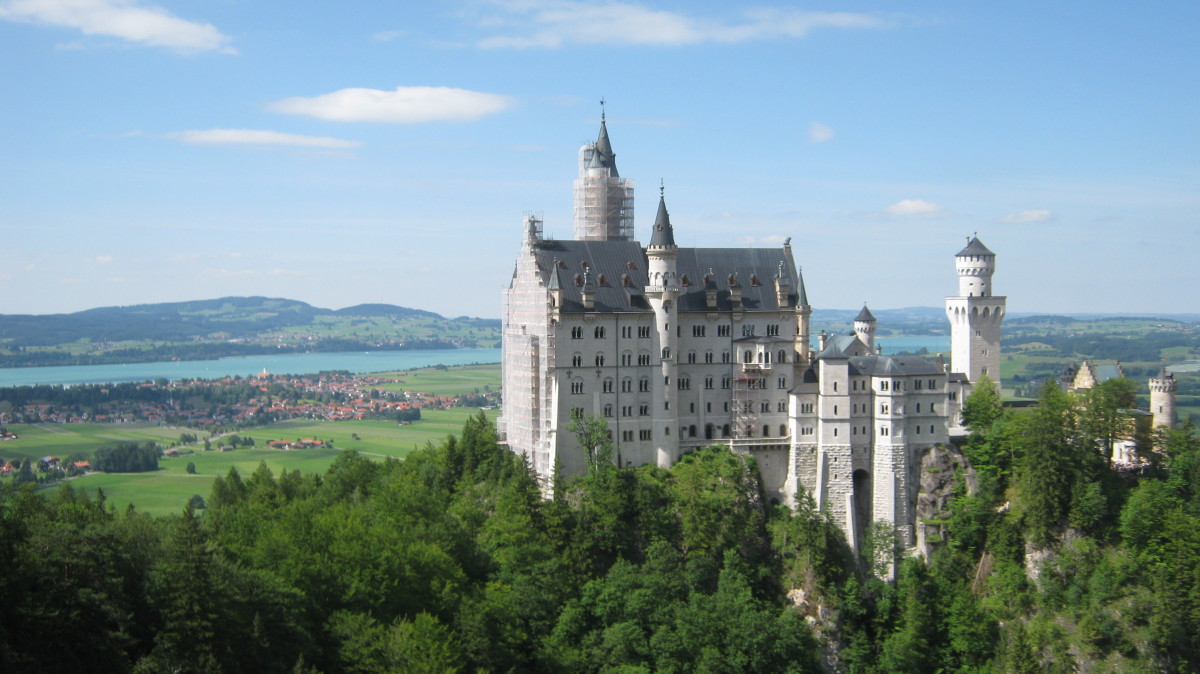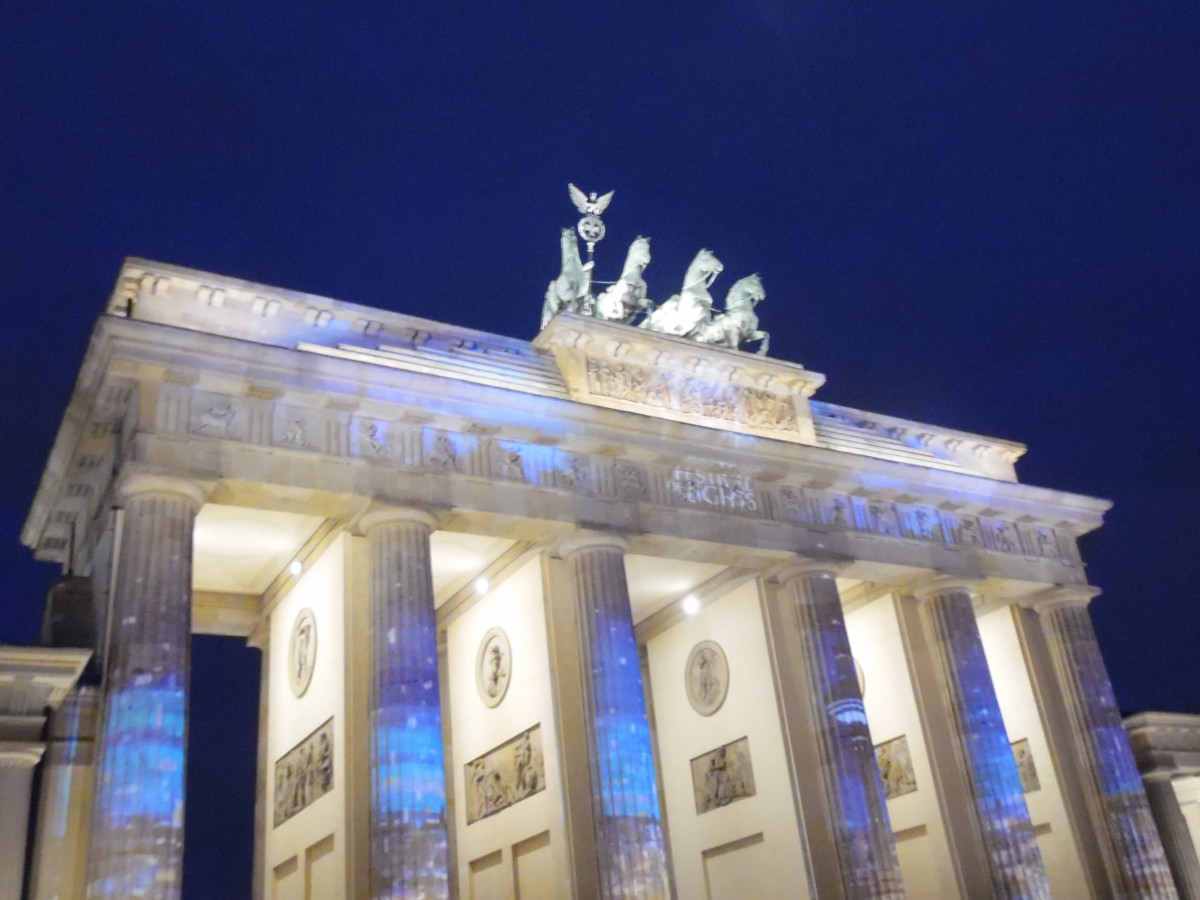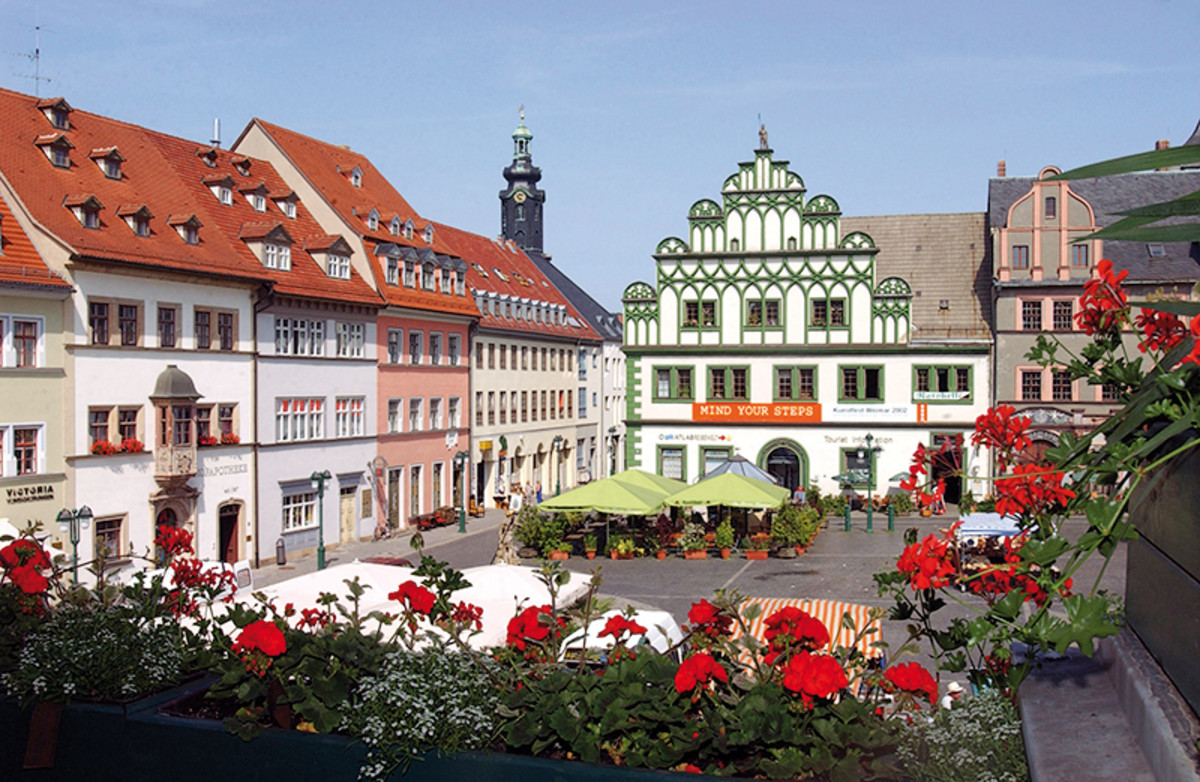Visiting Dasburg in the Rhineland-Palatinate, Germany: with its ancient castle, and bridge linking it to Luxembourg
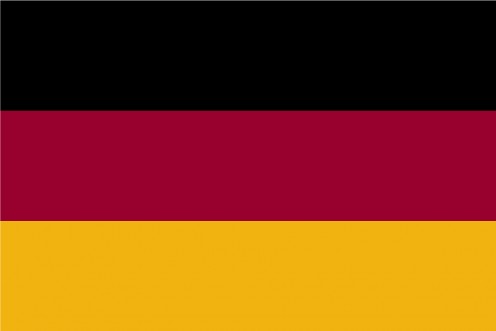
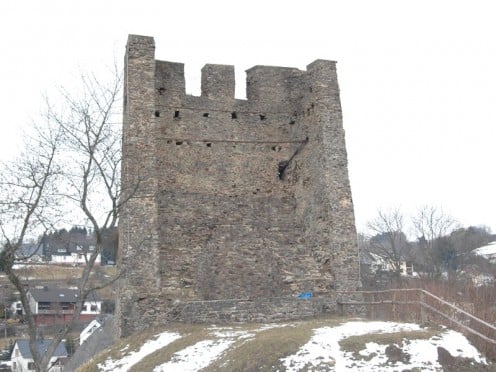

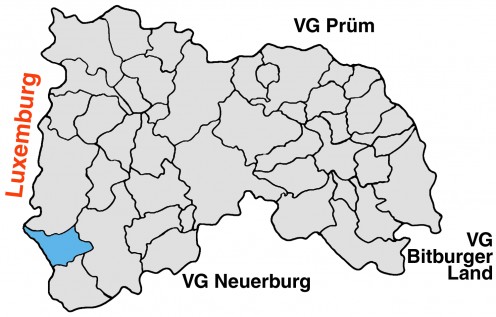
Linked also to a linguistic complication
Dasburg is in Germany's Rhineland-Palatinate , and its ancient castle, now in ruins, stands watch over the Our River valley. Given that the Our River marks the international border with the Grand Duchy of Luxembourg, Dasburg is thus separated from Luxembourg by a short bridge to a place called Dasbourg-Pont . I crossed this small bridge and was struck by how small and quiet was this international border.
Dasburg's castle
The ancient castle which overlooks Dasburg dates from 850, in its original recorded form.
For many years the castle was linked with the Abbey of Pruem . Later, the Counts of Vianden came into its possession. French troops occupied the castle after the French Revolution. Subsequently it became Prussian.
Dasburg thus offers a scenic location with a long history.
Linguistic curiosity
It also offers a somewhat curious linguistic situation. Linked administratively with the municipality of Arzfeld on the German side, Dasburg is contiguous geographically with Dasbourg-Pont over the Our River which is — with the remainder of the Grand Duchy of Luxembourg — officially trilingual. Thus, German-speaking Dasburg possesses what amounts informally to a suburb in another country, with three different spellings: Dasbourg-Pont (French), Dasburgerbrueck (German) and Dosberbreck (Letzebuergesch , designated Luxembourg's national language). Dasburg , Germany, also has a Letzebuergesch name, Dosber ; in fact, it has another Letzebuergesch variant spelling, Doosber. While neither of the Letzebuergesch spellings of its name are recognized officially in Dasburg on the German side of the Our River , the existence of these variants has in turn produced two Letzebuergesch variants for Dasbourg-Pont on the Luxembourg side of the river: Dosberbreck and Doosberbreck.
Thus, a local citizen, when travelling and faced with the frequently asked questions by an official: what's your name, where are you from and how do you spell it? is capable of giving some rather complicated answers.
I refer to now, of course.
But if this were not complex enough, on some older maps Dasburg , Germany was spelt Dasbourg , i.e., in the French spelling. Going back centuries, it was recorded as Daisberg . Furthermore, previously it was recorded as 'Dasberg '. If this were not enough, it was previously recorded as Daysberhc .
It is probably fair to say that as well as history and fine scenery, a place such as Dasburg and district offers, via its linguistic subtleties, access to an historically driven mindset.
Also worth seeing:
Pruem , Germany, (distance: 34 km) is a picturesque town in the Eifel region, with some fine ecclesiastical architecture.
Clervaux , in the Grand Duchy of Luxembourg (distance: 14 kilometres) has a fine castle, distinguished ecclesiastical architecture and more Battle of the Bulge memories.
Burg-Reuland , Belgium (distance: 23 kilometres), situated in the German-speaking Ostkantone area, has significant buildings including a fine castle with a long history.
Be sure to visit also the photogenic and historic Luxembourg City (distance: 59 kilometres).
...
How to get there: Lufthansa flies to Frankfurt-am-Main, from where car hire is available. The nearest large international airport is Luxembourg (Aéroport de Luxembourg ), at Findel. For North American travellers making the London, England area their touring base, airlines flying to Luxembourg include Luxair (from London Heathrow Airport and London City Airport) and CityJet (from London City Airport). Please check with the airline or your travel agent for up to date information. Please refer to appropriate consular sources for any special border crossing arrangements which may apply to citizens of certain nationalities.
MJFenn is an independent travel writer based in Ontario, Canada.
Other of my hubpages may be of interest
- Visiting Langsur and Wasserbilligerbrueck, Germany: a thousand year old settlement by the Sauer and
At Langsur, in Germany's Rhineland-Palatinate, Langsur is a thousand-year old settlement on the banks of the Sauer River . Langsur is recorded in history as far back as the year 978, referred to in a... - Visiting Waldhof-Falkenstein: memories and illusions from Germany's Rhineland-Palatinate
Set on a hill, the partially ruined stones of Burg Falkenstein, in Waldhof-Falkenstein, make for imposing views in this area of the Bitburg-Prm district of Germany's Rhineland-Palatinate (Rheinland-Pfalz). ... - Visiting Clervaux in the Grand Duchy of Luxembourg: rich architectural heritage and Battle of the Bu
Clervaux, the name of a municipality and an administrative canton, is one of those places where history seems to tread everywhere you look. The medieval castle which stands in the centre of town was founded... - Visiting Burg-Reuland, Belgium: Monumentality in the German-speaking Ostkantone
German-speaking part of Belgium? Yes, eastern Belgium has a German-speaking area known as the Ostkantone (French: Cantons de l'Est, a phrase which will be familiar to Canadians, given the existence of an...
